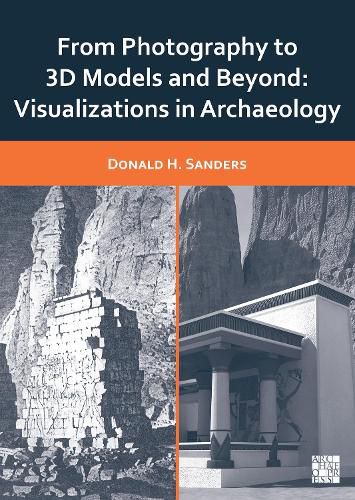Readings Newsletter
Become a Readings Member to make your shopping experience even easier.
Sign in or sign up for free!
You’re not far away from qualifying for FREE standard shipping within Australia
You’ve qualified for FREE standard shipping within Australia
The cart is loading…






From Photography to 3D Models and Beyond: visualizations in archaeology explores the history of visual technology and archaeology and outlines how the introduction of interactive 3D computer modelling to the discipline parallels very closely the earlier integration of photography into archaeological fieldwork. The incredible potential of interactive 3D computer graphics to provide new insight into cultural change, ancient settlement development, building function, and behavior make virtual heritage a must-use approach, but one that has not been fully grasped. This volume brings together for the first time several key aspects of the history of archaeology: how and where photographs became an indispensable part of excavations; when and for what purposes virtual reality began a similar journey into the field team's arsenal of documentation, publication, and visualization tools; how the common trajectory of both technologies provides clues for why virtual reality has not yet become as commonplace as photography for archaeological research, teaching, and data dissemination; and how new methods and technologies are poised to revolutionize our understanding of the past.
$9.00 standard shipping within Australia
FREE standard shipping within Australia for orders over $100.00
Express & International shipping calculated at checkout
From Photography to 3D Models and Beyond: visualizations in archaeology explores the history of visual technology and archaeology and outlines how the introduction of interactive 3D computer modelling to the discipline parallels very closely the earlier integration of photography into archaeological fieldwork. The incredible potential of interactive 3D computer graphics to provide new insight into cultural change, ancient settlement development, building function, and behavior make virtual heritage a must-use approach, but one that has not been fully grasped. This volume brings together for the first time several key aspects of the history of archaeology: how and where photographs became an indispensable part of excavations; when and for what purposes virtual reality began a similar journey into the field team's arsenal of documentation, publication, and visualization tools; how the common trajectory of both technologies provides clues for why virtual reality has not yet become as commonplace as photography for archaeological research, teaching, and data dissemination; and how new methods and technologies are poised to revolutionize our understanding of the past.